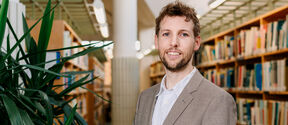Cinema acoustics can modify substantially the soundscape of a movie

During the film production process, the soundtrack is finalised at a mixing stage and transferred to the cinema with the movie. However, recent research at Aalto University shows that the soundscape may sound very different in the cinema than what the sound engineers planned.
The researchers first measured the spatial impulse responses inside cinemas, i.e. recorded their acoustic conditions. Next, the arrival direction of the sound and the tone of the sound with the desired audio track were transferred to laboratory conditions in the anechoic multi-channel listening room of the Acoustics Lab. 30 sound professionals in the film industry then evaluated in listening tests how the acoustics and audio system of cinemas changed the audio samples extracted from films.
Among other things, the results showed that it is easier by far to discern the cinema rooms from one another based on speech than based on music.

‘It was surprising to see that the same cinema room sounds so different when playing music and when playing speech. The difference was so great that some of the listeners did not believe that this was the same room,’ says PhD candidate Janne Riionheimo.
In speech, the main differences between the cinema rooms were in the reverberation, while in music, the most important differences were in sound colour, i.e. frequency response and brightness. There were also differences in the clarity of the sound, the width of the sound image, i.e. how narrow or wide the music sounds, and the perceived distance, i.e. how close or distant the sound sounds.
The reverberation of cinema rooms is also perceived as part of music, especially in slower songs. The reverberation often improves the music experience, but it can also make dialogue unclear. The more rhythmic the sound track becomes, the more the reverberation of the room muddies it. If, on the other hand, the dialogue already contains reverberation or ‘space’, the effect of the acoustics in the cinema room is reduced.
‘This poses challenges to mixing when the sound engineer has no idea how much reverberation there will be in the cinema rooms where the movie will be watched and how much artificial reverberation to add in the soundtrack at the mixing stage,’ Riionheimo says.
How does it sound in a home cinema system?
Although the sound systems in the cinemas are calibrated according to the standards of the film industry, the brightness of the sound varies from one cinema room to another. A lack of brightness can easily make music sound muted and stuffy. The sound system also strongly affects the perceived sound image width, while the changes in distance and clarity are linked to the acoustics of the room.
‘The research results show that the reverberation in large cinemas, in particular, should be shorter than the current recommendations and the methods for calibrating sound systems need to be updated,’ Riionheimo says.
Many people watch movies at home – especially during the coronavirus pandemic. Living rooms without acoustic panels might face soundscape problems similar to the ones in overly reverberant cinema rooms. Reverberation is usually not an issue in living rooms with acoustic panels, but the bass frequencies can become overemphasised in a small room, especially in stone houses.
‘One solution is a wooden house where the bass can leak outside – if there are no neighbours who would be disturbed by the bass nearby,’ Riionheimo says.
Links to articles in the Journal of the Audio Engineering Society publication:
Movie Sound, Part 1: Perceptual Differences of Six Listening Environments
Movie Sound, Part 2: Preference and Attribute Ratings of Six Listening Environments
Further information:
PhD candidate Janne Riionheimo
Tel. +358 50 375 9421
janne.riionheimo@aalto.fi
Aalto University School of Science
Professor Tapio Lokki
tel. +358 40 578 2486
tapio.lokki@aalto.fi
Aalto University School of Electrical Engineering
Read more news

A new way to measure contagion: the gut bacterium behind blood poisoning can spread like influenza
Neither the antibiotic-resistant nor the highly virulent strains are the most transmissible.
Cross-sectoral working group: Competitiveness, security and green transition must be promoted as a whole
A cross-sectoral working group for universities, businesses and cities is proposing that Finland speed up its international competitiveness, national security and green transition as one entity. The group suggests that, for example, defence procurement could support solutions aimed at a carbon-neutral society.
Meet Patrick Fleming, assistant professor of structural and architectural engineering
Fleming believes making the most of existing buildings is key to reaching a sustainable future.






